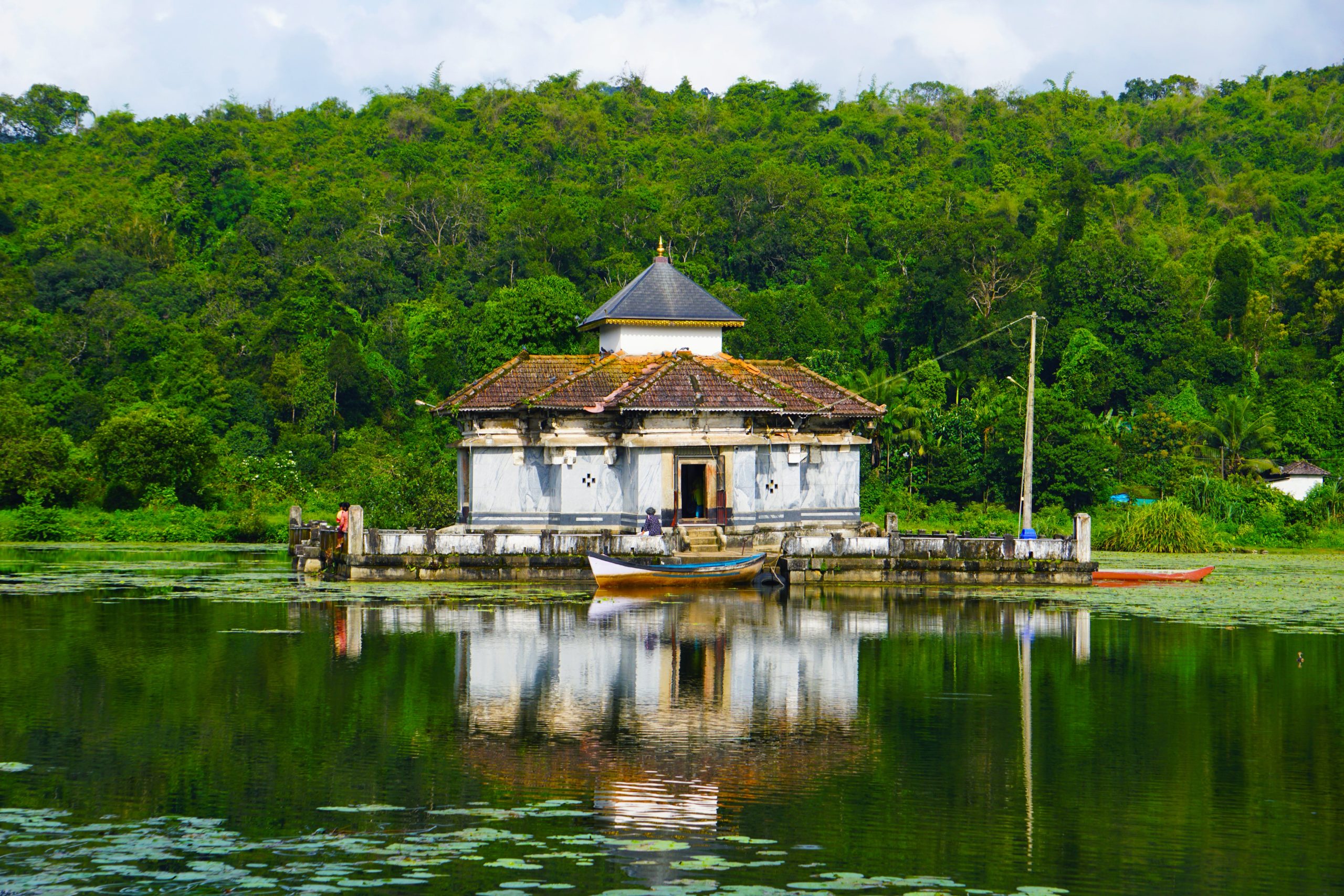The Varanga Jain temple, a timeless marvel, appears to float gracefully on the water, epitomizing the splendid and culturally rich heritage of Karnataka. Nestled about 26 kilometers away from Karkala taluk of Udupi district, this 1000-year-old Jain temple, known as Kere Basadi or the Lake Temple, is a true gem.
The Chaturmukha Basadi, as it is commonly referred to, owes its name to its square-shaped structure, featuring four entrances in the four cardinal directions.
Dedicated to the revered Jain Lord Parshwanath, Kere Basadi is one of Varanga’s three Jain temples. Within its sacred confines, the temple houses four significant idols: Lords Neminath, Parshwanath, Shantinath, and Ananthanath. Additionally, an idol of Devi Padmavathi graces the temple, with all the Tirthankara idols assuming the Kayotsarga (standing meditation) posture.
Situated in the heart of a lake, the unique location requires the priest to embark on a daily boat ride to reach the temple and perform the sacred rituals. An inscription at the Neminatha Basadi indicates that the lake was excavated during the 12th century under the orders of King Kulashekhara and his queen.
Beyond its religious significance, the temple serves as a tourist attraction, drawing visitors not only for its spiritual ambiance but also for its extraordinary setting. Pilgrims find solace and tranquility at the site, basking in the serene experience it offers.
Varanga, a quaint village in Karkala, is home to other Jain temples, including Neminatha Basadi and Chandranatha Basadi. These temples stand as silent witnesses to the evolution of Jainism, whose roots trace back to the 7th or 8th centuries.
Jainism, as a formal religion, originated in Bihar after the 24th Tirthankara Mahavira formalized its tenets. The Jain temples of Varanga, with their historical significance and serene surroundings, invite visitors to embark on a journey through time and spirituality.














